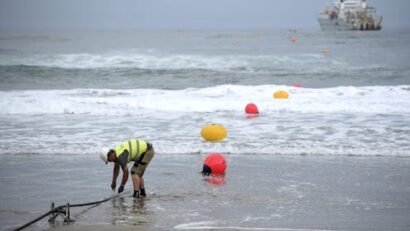
China’s new underwater tool cuts deep, exposing vulnerability of vital network of subsea cables
Laying an undersea fiber-optic cable at Arrietara beach near the Spanish village of Sopelana. Ander Gillenea/AFP via Getty ImagesChinese researchers Läs mer…


